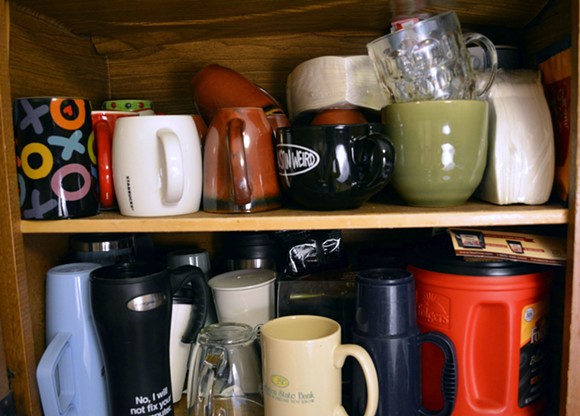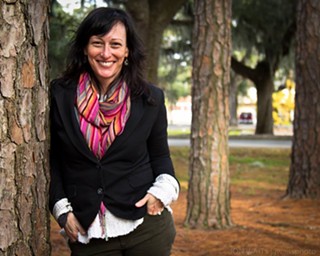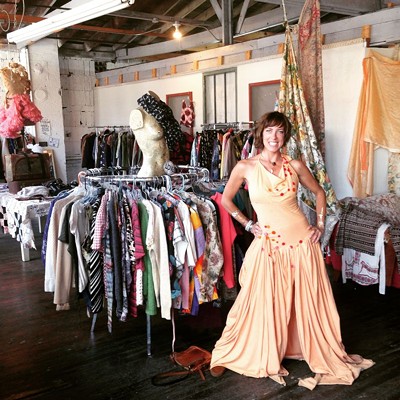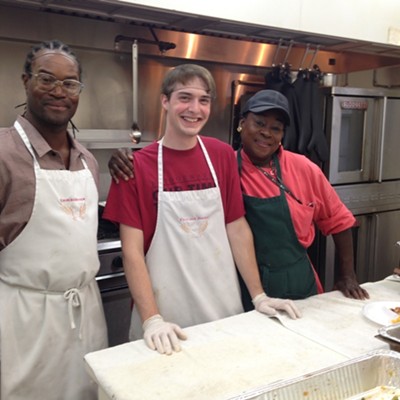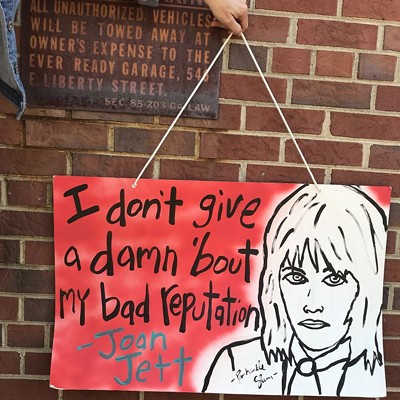EVER SINCE the first week of November, I’ve experienced a sense of deep discomfort, like being trapped in a sock.
No matter how often I wiped down the counters and swept the floor, my house never felt clean. I wore the same denim jacket for weeks because I didn’t want to stick my arm into the terrifying depths of the stuffed coat closet.
Every time I’d sit down on the sofa to relax, the collection of photos and figurines and vases and candleholders above the fireplace seemed like they might be conspiring to strangle me in my sleep.
“The tsotchkes are staring at me,” I’d whisper to my husband.
“Maybe you shouldn’t have a second glass of wine with dinner,” he’d whisper back.
I suspected I was projecting my sense of impending doom for our democracy into the physical realm, but that didn’t make it any less suffocating. By the time the holidays rolled around, I was having full-blown hallucinations of mutinying kitchen utensils and T-shirts that multiplied in the dark.
Those weren’t the only delusions. I’ve always thought of myself as a fairly conscious consumer. I swap clothes with stylish friends instead of shopping and bundle up my kids’ toys to pass on.
I reuse and recycle to the point of being the crazy person who washes Ziplocs and hangs them off spoons in the dishrack. I do my best to purchase items of quality that will last, though I’ve yet to find a damn printer that lasts more than two years.
Yet I’ve still managed to accumulate drawers full of half-used rolls of masking tape and Christmas cards from 2008. Somehow I own an entire cabinet of mismatched coffee mugs, including one emblazoned with “Just Another Sexy Bald Guy.”
Apparently I have not thrown away a single finger painting or report card in either child’s entire school careers (the oldest is going to graduate high school next year.)
And then there’s the “art corner” in the kitchen, a pile of cardboard tubes, old calendars and other potential craft items that at one point served as a literal rat’s nest until Mark sealed the vent in the pantry.
After reading about the terrifying tale of a Brooklyn hoarder who lived with her adult son’s decomposing corpse for 20 years, I decided I couldn’t stomach another second.
“Decide” is actually the wrong word—this wasn’t a rational, “let’s get organized!” project; this was more akin to demonic possession.
I started with the attic on the third day of January, throwing broken suitcases and empty computer boxes down the stairway while howling like a banshee. The dog cowered as I carted ten trash bags to the lane, for once in my life piling garbage up so high I had to call 311 for a special pick-up, landfills be damned. (It cost $25, far less than an exorcism.)
I designated the emptiness left behind into areas for things to keep and things to sell or donate, then started on the rest of house, the shelves, nightstands, bookcases, the cluttered hovel I call my desk.
I quickly figured out that my visceral urge to purge was about more than cleaning my physical space.
As I unsentimentally tossed out dust-encrusted half-melted candles and Adobe Illustrator CD-ROMs, I experienced the same liberation that I felt at 23, when I was so weighed down by unreasonable expectations of adulthood that I sold or gave away everything I owned, shaved my head and moved into a VW bus.
That turned out to be the defining moment of my life, and while the Great Purge of 2017 is considerably less dramatic, it still presents a point of facing life leaner and meaner, without unnecessary baggage. It can also have a positive effect on the psyche.
Urban Gypsy Trunk Show proprietor Elle Erikson collects clothing for a living, but says paring down her personal possessions over the last few months has brought a new sense of serenity.
“Since decluttering, I’ve noticed a measurable shift in my peace of mind. With less clutter and fewer choices, it seems to have helped me stay more focused,” says Elle, who is based in Asheville, NC and sets up her 1000-item pop-up shops in Savannah several times a year.
“Emotions take up space, too,” reminded another friend also in the midst of moving mounds of detritus out of her house. “When you clear things out, you have more room to feel, and you just feel better.”
I knew I wasn’t alone in my quest to overcome the chaos, but I hadn’t realized that unloading crap en masse has become a full-fledged movement.
I was already deep in the purge process when pianist Ben Warsaw mentioned a film he’d watched recently on Netflix. Minimalism: A Documentary about the Important Things has won myriad awards and follows the cultural trend of paring down in a world gone mad with having.
One of the first scenes is the film is of Black Friday psychosis, women punching each other in the face over an Xbox—an extreme example of the capitalism-gone-wild being rejected around the world.
“If it doesn’t add value to your life, you don’t need it,” says one of the stars, Ryan Nicodemus, a former corporate wonk who left his job to write The Minimalists with his best friend.
This is a terribly dangerous idea to an unsustainable system that depends on our addiction to acquisition. It may also be the cheapest, simplest path to salvation.
My efforts may never reach minimalist standards; the bookshelf barely shows the difference. Yet the house feels lighter, and I’m not longer terrified that my bubbie’s ballerina painting is going to eat my brain.
I’m handling this week’s ACA abomination and the insults against Rep. John Lewis by keeping busy filling all the Little Free Libraries on the Flannery O’Connor Book Trail and posting vintage purses on the Buy Sell Savannah FB page.
I’ve also learned that while it feels good to freshen up our houses and minds, it’s important not to let the purge demon go too far.
One of the first items to go was a rat-nibbled relic from our kids’ toddler years, a replica of the red Thinking Chair from the TV series Blue’s Clues (the Steve era, of course.) To me, it was just another outgrown thing taking up space.
To my husband, it was a sweet reminder of the years we’d all spent together watching Steve and Blue solve nerdy preschool mysteries, before everyone graduated to separate screens and no one wanted to play “licky neck” anymore.
I hadn’t known that every time he went into the attic for the last ten years to get a suitcase or pull down the Halloween decorations, he’d touched the velvety arm of the Thinking Chair and smiled, fondly remembering the exhaustion and bliss of early parenthood.
In my cathartic hysteria, I realized with shame, I’d unwittingly tossed out a thing imbued with a precious memory. Actually, I sold it for $20 to a lady who bought it as a bed for her toy poodle.
“I didn’t even get to say good-bye to it,” said my husband sadly, looking at the now-organized attic.
Our sanity and stamina can be improved by unburdening things, but unilateral dumping doesn’t help our relationships with our loved ones.
My husband says he can forgive me for casting off the Thinking Chair but has made me promise to include him on any future possessions—er, decisions.
Maybe I’ll let him tackle the coat closet. cs

